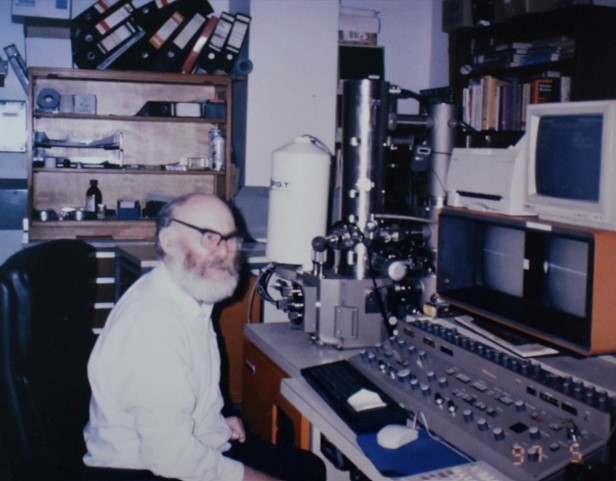About the University of Leicester
George McTurk
We are sad to report the death of George McTurk, a man who served the University for nigh on 40 years in the Geology Department and Pre-Clinical Sciences in the Medical School from 1963 to 2003. He worked through burgeoning times from the age of simple calculators in the 1960s to the digital revolution that has so changed all our lives during the late 20th to early 21st centuries.

Emeritus Professor Peter Maguire writes:
George Leslie Cummings McTurk was a Scotsman, and proud of his roots in Canongate in Edinburgh, close to the Botanical Gardens. He relished the outdoors and as a young man joined the Territorial Army. He left school at 15 and secured a position as a trainee technician in the Geology Department at Edinburgh University. From there, following time in the Geology Department at Swansea University, he was headhunted by Peter Sylvester-Bradley, the first Professor of Geology at the University of Leicester. Here he became Chief Technician just in time to help see the move of Geology into the new Bennett Building at the north end of the campus. His interests grew with the research undertaken at Leicester and when Sylvester-Bradley secured the first Scanning Electron Microscope to be used in a UK Geology Department, it was George who managed and operated it to produce amongst other things, the stereo-imaging of ostracods, fossils at the heart of the Professor’s research, as well as the textural and chemical analysis of minerals within a plethora of geological samples for many other staff members at the time - pioneering work indeed! From 1973 onwards, George’s electron-micrographs provided the basis for an innovative scientific periodical produced by the Department under the editorship of Peter Sylvester-Bradley and his Leicester post-doctoral fellow David Siveter; A Stereo-Atlas of Ostracod Shells set new standards in the scientific illustration of species. In the same period, in a gradual transition to an SEM user/operator system, George helped train cohorts of Leicester staff and associated researchers in the use of the SEM and allied analytical facilities. This proved crucial in the research output and high profile achieved by the Geology Department.
George had an engaging, impish sense of humour. He was a kind and a very brave man. It was in 1973 that the Geography Department in the top floor of the Bennett building suffered its infamous roof collapse, resulting from a failure of high-alumina cement in the support beams. Realising there might be students in the Geography reading room, it was George who raced up the adjoining stairs, down which a thunderous cloud of dust and debris was being scattered, to check whether there was anyone up there who might have been injured in the calamity. Thankfully there was not.
In the early 1980s, George transferred to Pre-Clinical Sciences in the Medical School, where he assisted Dr Marjorie England, one-time President of the Institute of Anatomical Sciences, in establishing a Scanning Electron Microscope in the Department of Anatomy in which she worked. With George, she used the technology extensively in her research covering a variety of topics, for example from the study of the skull’s occipital squama to wound healing in chick embryos. He also worked with her colleagues who used the facility in a variety of different projects.
George’s interests were many including outdoor activities and sports; walking - especially in the Highlands, pony trekking, archery, ice-hockey, canoeing and more. He met his second wife Pam in the University Medical School, and amongst many other things they shared a love of music, she playing the piano, George being a more than accomplished exponent of the classical guitar. He will not be forgotten despite his untimely death; for those attending his funeral and for his lifelong friends he will be remembered as ‘a lovely man’.